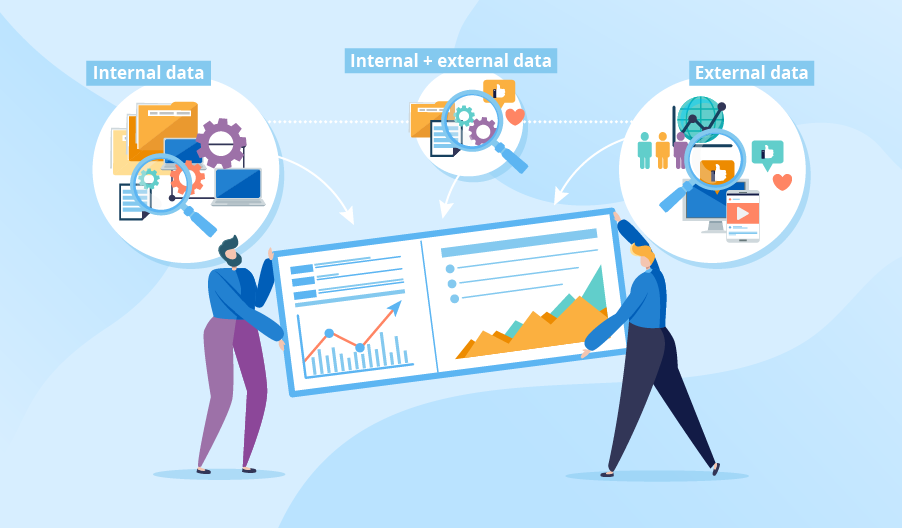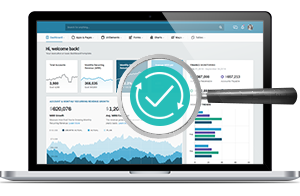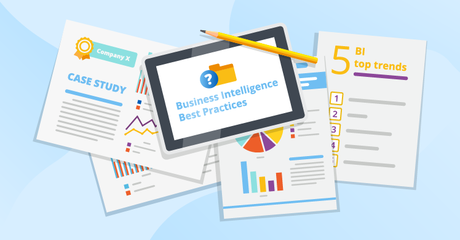Editor’s note: In this article, Irene leverages ScienceSoft’s experience to share three approaches to Business Intelligence (BI) as a service from the perspective of analyzed data. If you want to learn more about the value BI as a service can bring, explore our offer in managed analytics services.
‘Owning’ a business intelligence (BI) solution is no longer the only possibility for a company striving for informed decision-making. The data analytics outsourcing market is forecasted to grow, which means that more and more companies will choose ‘renting’ their BI over any type of implementing it.
Before taking a closer look at the approaches to BI as a service, let me quickly define the main differences between BI as a service (also known as managed analytics services or data analytics outsourcing) and BI implementation services:
- BI implementation presupposes a 6-8 month project. Once it’s completed, a company gets a data analytics solution (on-premises, in-cloud, or hybrid one).
- BI as a service presupposes continuous cooperation, where the outsourcing partner is totally responsible for the solution’s technical embodiment, and the company gets access to first analytical insights in 1-5 days from the cooperation start.

BI as a service based on internal data
Relying solely on the data retrieved from a company’s systems, this approach provides insights into the company’s business processes, customers, performance, and more. As a main advantage of this approach, I would mention a plethora of data available for the analysis.
For illustration, let me draw your attention to one of ScienceSoft’s projects, where a metal parts manufacturer requested us to help them prioritize their product categories as they wanted this strategic decision to be data-driven. In the course of the project, ScienceSoft scrutinized the manufacturer’s 2-year financial and production history data into meaningful insights and built reports and graphs so that they could glance at the findings and find the answers to their business questions.
However, there is a significant drawback in getting insights derived from internal data solely. The company is limited to their ‘internal wisdom’ and lacks external data for sound comparison.
BI as a service based on external data
This approach is frequently used to run strategic market analysis or social media analytics. The biggest challenge while working with external data is ensuring data quality, as it usually comes from multiple disintegrated data sources and can contain errors and discrepancies.
Have a look, how this approach was realized in our other project, where a management consultancy outsourced the analysis of market data to ScienceSoft to get valuable insights into different industries in various economic conditions. To solve this task, we deployed the BI infrastructure with a data warehouse and an OLAP cube of 40+ dimensions on our server, and our customer was provided with the access to the pre-built reports and dashboards, with the possibility to run ad hoc analysis.
Hybrid approach
Using data from both inside and outside, a company can get the broadest picture that encompasses both their internal operations and the market perspective. No wonder that a hybrid approach is the most widespread.
According to the Business Application Research Center (BARC), companies mostly derive data from multiple data sources. Besides, there’s a trend towards increasing the number of data sources (a half of BARC’s respondents believe that they already experience this trend). Also, the number of data sources naturally depends on the company size: BARC names a median number of 5 internal sources for mid-sized companies and 10 sources for large ones.
Is there the best approach?
Of all the approaches, I consider the hybrid one the most efficient as it ensures the variety of data sources and offers better scope for analysis. However, as you may see from the examples I’ve outlined, the scenarios with getting insights from just internal or external data are also possible. So, if you need to define which approach will work better for your business, let me know.

Request a ready-to-run service from ScienceSoft to start getting valuable insights within a couple of weeks. Data analytics expertise since 1989.



